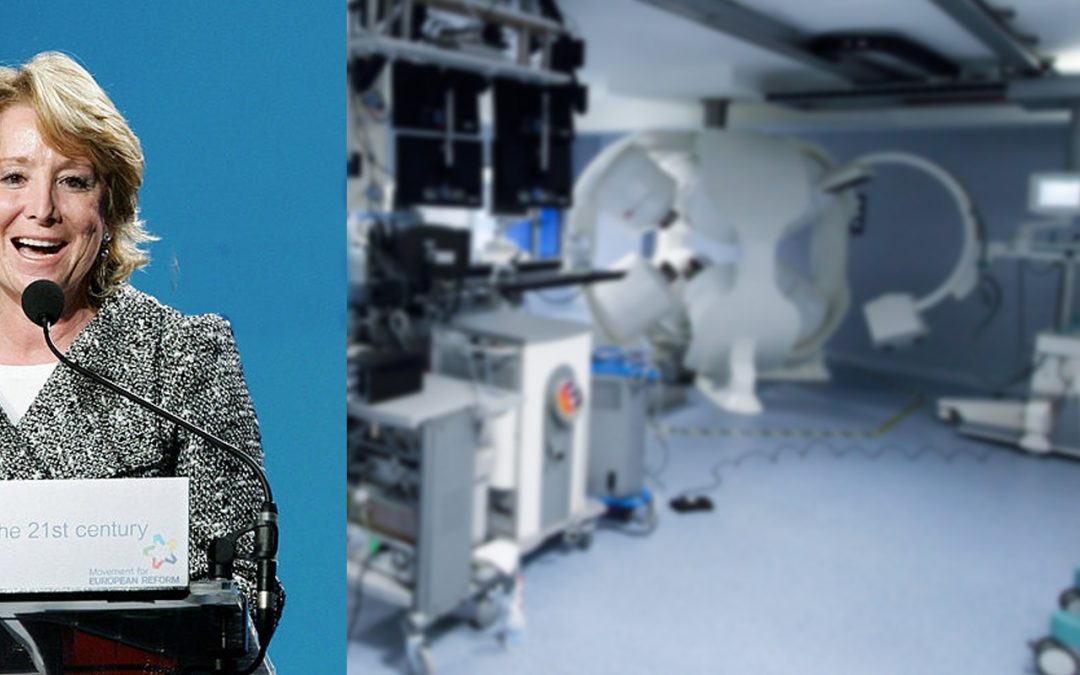
President Esperanza Aguirre of Madrid
The inauguration of the electrophysiology lab at Hospital General Universitario La Paz in Madrid, Spain, equipped with the Company’s CGCI Catheter Guidance Control and Imaging (CGCI) system was attended by a variety of noted physicians, scientists and political leaders including Madrid’s President, Doña Esperanza Aguirre y Gil de Biedma, Countess of Murillo, Grandee of Spain
The opening ceremonies included a keynote address by President Aguirre, President of Madrid’s People’s Party and the first female politician in Spain to have held the offices of President of the Senate and Minister of Education and Culture. During the keynote, President Aguirre stated, “We are proud that La Paz hospital is the first in the world to have this advanced system for treating heart conditions,” The cardiology department of La Paz Hospital is a pioneer in the treatment of complex arrhythmias and other diseases of the heart. This new electrophysiology laboratory is an important milestone in the research and treatment of heart disease.”

President Aguirre of Madrid talks with Josh Shachar at CGCI Suite inauguration.
Along with President Aguirre at the inauguration of the electrophysiology laboratory was Javier Fernandez-Lasquetty, Minister of Health. In addition to dignitaries from Spain, Dr. Jose Merino, Director of the Arrhythmia & Electrophysiology Research Unit of the hospital, and Josh Shachar, Chief Innovation Officer for Neuro-Kinesis also spoke.
With the opening of the suite, human studies of the CGCI system begin on October 7, 2010. The Principal Investigators for the studies were Dr. Vivek Reddy, Professor of Medicine and Director, Cardiac Arrhythmia Service, Mount Sinai School of Medicine, in New York City, and Dr. Eli Gang, Chief Operating Officer of Neuro-Kinesis and Clinical Professor of Medicine, Geffen School of Medicine at UCLA.
The initial study consisted of 20 patients in which a highly detailed map of the heart was created using the CGCI magnetically guided catheter. The mapping study completed successfully and was followed by a second study involving 40 patients in which mapping and ablation procedures were conducted using the CGCI system.

President Aguirre of Madrid tried her hand at controlling the CGCi.

